-
Car Reviews
- Car News
-
Car Comparisons
Latest comparisons
- Chasing Deals
Australia is the biggest market for the new Volkswagen Amarok – and a first drive of the vehicle reflects how closely the Ford-VW collaboration hews to local tastes
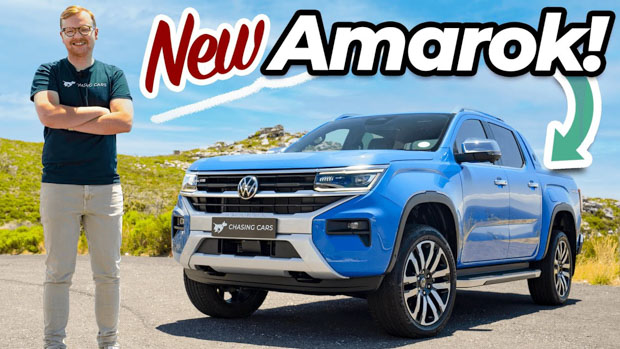
Among dual-cab utes, the Volkswagen Amarok became something of a cult hit in Australia. The soberly-styled, German-engineered pick-up struck a chord particularly with the growing crowd of small business owners and white-collar professionals wanting a do-it-all vehicle with some of the finishes of a high-grade VW.
Volkswagen built 830,000 examples of the first-gen Amarok at its factories in Germany and Argentina. Of this near-million, ten percent were sold in Australia – making our market a big fish in a relatively small production pond for vehicles of this size. By contrast, Toyota sells about 500,000 Hilux utes globally – every year.
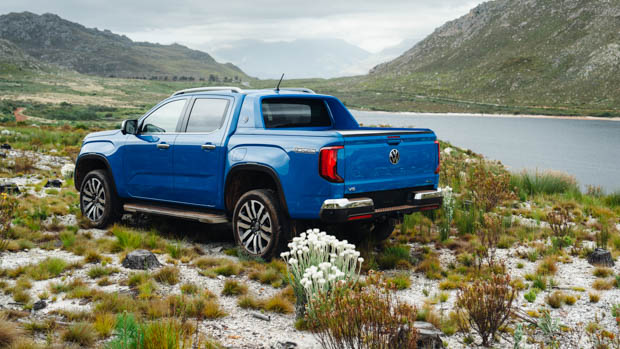
Australia’s love affair with the first Amarok was spurred along further by the arrival of a diesel V6 in 2017 – but while the ute lived large in Volkswagen’s local dealerships, it remained a niche vehicle for Volkswagen globally. Funding was not approved to develop a second generation in-house, so VW’s semi-independent Commercial Vehicles division went in search of a collaboration partner.
It did not consider any Japanese manufacturer as a partner, instead settling on Ford in the late 2010s. As collaborations go in this segment, arguably, it doesn’t get much better than the Ranger—a pick-up developed in Australia and closely attuned to our tastes.
But the T6.2 Ranger, at that stage in primitive stages of development, was bolstered by the addition of Volkswagen’s engineers, designers, and product planners, who presented Ford with a list of non-negotiables: a V6 diesel engine, pallet-width tray, and an SUV-like interior architecture with a future ability to introduce an electric version.
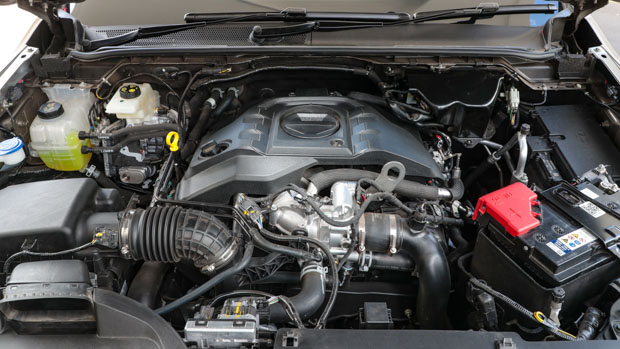
All were incorporated into the final project for both vehicles—including leaving space between the Amarok’s frame and passenger floor for a battery of around 100kWh for an eventual fully-electric powertrain.
The previous generations of both Amarok and Ranger were frequent one-two contenders in ute comparisons, including Chasing Cars’ own 2022 dual-cab megatest. As ute collaborations go, then—it should be a prom king-and-queen story.
Sharing hard points, many dimensions and powertrains with the Ford Ranger, the second-generation Volkswagen Amarok is longer than the car it replaces, and a little narrower. However, the Australian-penned exterior design is handsome and the distinctly Amarok-looking interior is more spacious than before.
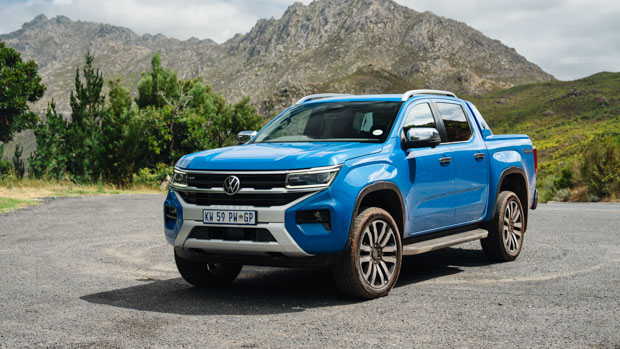
However, the whole spectacle begs the question: is the new Volkswagen Amarok a T6.2 Ford Ranger by another name, and in a sharper suit? Or, does this ute, which has unique suspension and steering tunes—even unique dampers on the Aventura grade on test—feel and drive like a Volkswagen?
On the back of Volkswagen’s bullish expectation of 10,000 sales per year of the new Amarok, we travelled to the country that will exclusively build the new Amarok, South Africa, to find out – primarily sampling the flagship Aventura grade equipped with a 3.0-litre turbo-diesel V6 engine.
Pricing hasn’t yet been locked in for the 2023 Amarok and can still be influenced by a range of factors like currency fluctuations, but Chasing Cars understands that Volkswagen will announce Australian pricing in January—about a month away.
That said, prices will rise gently over the outgoing Amarok for most, if not all, specifications, which Volkswagen sources say reflects the significant bump in standard equipment for the ute.
Five grades will make up the Australian Amarok range. The workhorse Core grade will continue before the range jumps to a new Life variant that is a replacement for the Sportline. The Style replaces the old Highline, while Volkswagen will pursue a dual-flagship strategy with the street-style Aventura and the more rugged Panamericana.
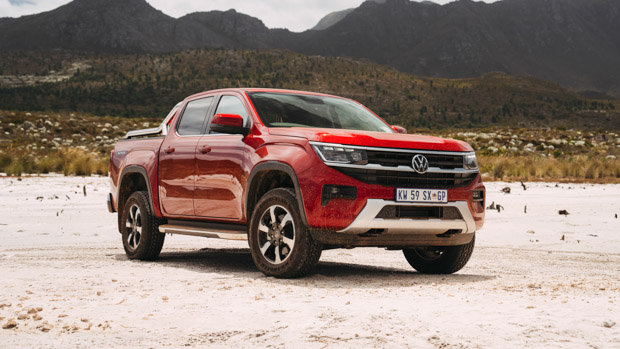
Pictured is the Style grade
The same 184kW/600Nm 3.0-litre diesel V6 as used in the new Ranger is the standard engine in the Amarok Aventura and Panamericana grades. The Aventura can be optioned with a fascinating 222kW/452Nm 2.3-litre turbo-petrol four-cylinder engine.
Style buyers will be able to option the diesel V6 for about $3000, but that car’s standard engine—shared with Life—will be Ford’s 2.0-litre bi-turbo diesel four-cylinder making 154kW/500Nm. All are four-wheel drive with a ten-speed automatic.
Core grades get a 125kW/405Nm version of the same engine and are equipped with 4×4, serviced by a choice of six-speed auto or six-speed manual transmissions.
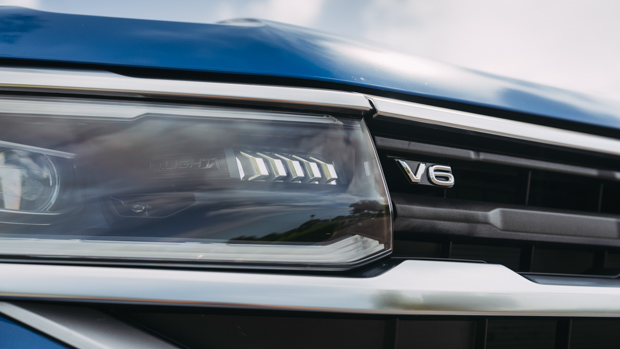
Even the Core will come standard with LED headlights, alloy wheels, a 10-inch vertical touchscreen and 8.0-inch digital instrument cluster, wireless device charging, AEB, adaptive cruise control, lane keeping assist, a reversing camera, a centre airbag, and a mechanical rear differential lock.
Life steps up with six speakers, a leather steering wheel, eight-way manually-adjustable front seats, an electric parking brake, front parking sensors, blind-spot monitoring, and front tow hooks.
The Style grade will account for 40 percent of Amarok sales in Australia and be the most popular grade, Volkswagen posits. To the Life, the Style adds:
It is expected that a luxury package will be offered for the Amarok Style, which allows buyers to sub in leather trim and a few other conveniences.
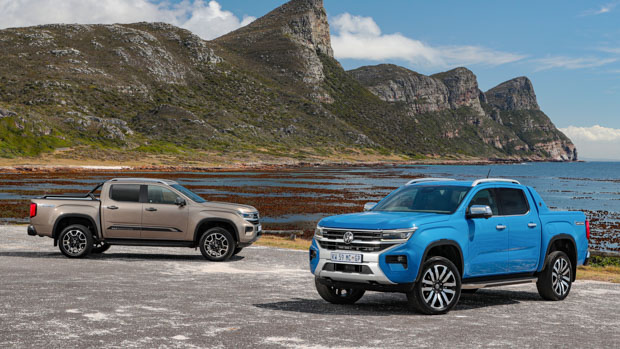
From that point, the Amarok range diverges to the dual Panamericana and Aventura flagships—but while both are regarded as range-toppers, the Aventura will be slightly more expensive in Australia due to its standard fitment of an electric tray cover.
The Panamericana scores:
By contrast, the Aventura wears much more brightwork, gaining:
On launch, both the Aventura and Panamericana grades presented as premium utes, especially inside – but the Style may end up being the sweet spot of the range.
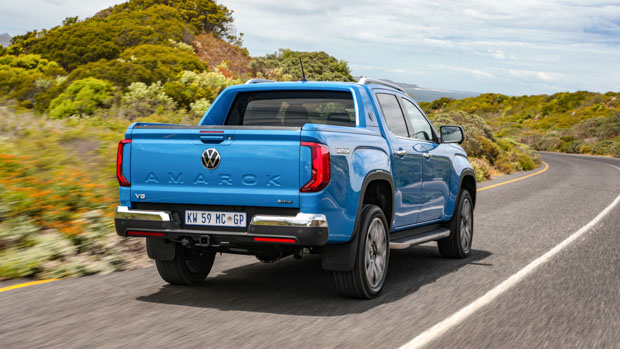
The Aventura’s standard engine is a smooth, powerful and pleasant-sounding 184kW/600Nm 3.0-litre diesel V6. The engine dates to the Ford-PSA AJV6 development program of the early 2000s: this is a long-running unit that has received plentiful upgrades through the years.
That said, while European buyers receive a slightly detuned 177kW V6 that complies with Euro 6 emissions standards, Australian Amarok (and Ranger) buyers receive a slightly less clean Euro 5 version. Interestingly, though, the Amarok has start-stop and the Ranger does not.
Strict durability standards set by Volkswagen have been written into the contract with Ford and are set at the same level as the reliability requirements of Volkswagen’s V6 TDI—an engine many Amarok owners came to love.
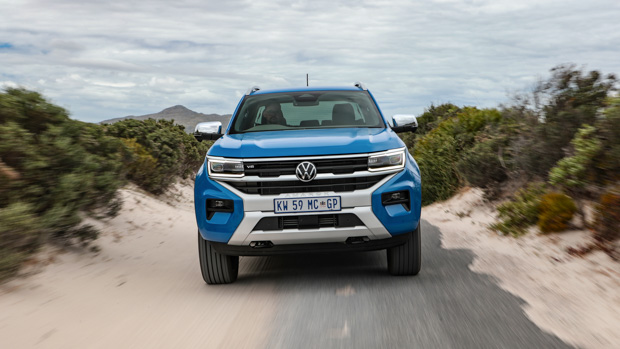
This Ford-built diesel V6 is different in character to the VW six, but it is slightly better to drive. It has somewhat less turbo lag than Volkswagen’s engine and is altogether a little more enjoyable to drive thanks to crisp throttle response and very strong mid-range torque.
It also makes a decent partner to the ten-speed torque converter automatic—the only transmission available with this engine. It left us thinking the previous Amarok’s eight-speed probably had enough ratios. And sadly, there will be no replacement for the old ute’s oddball V6 Core manual spec.
Performance-wise, Volkswagen has made no 0-100km/h claim for the new diesel. In the past, we have extracted a 7.70sec time from a Ranger XLT V6 with this engine (but a little less weight), so we are expecting a sub-eight-second result from the Amarok V6 when it lands in Australia.
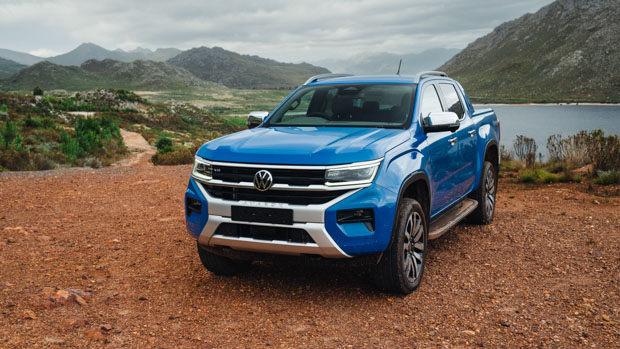
We weren’t able to sample the Aventura’s optional 2.3-litre turbo four-cylinder petrol engine in South Africa, and we are looking forward to trying this unit, which will alleviate some mass over the front axle and could offer even higher refinement than the smooth diesel V6.
And where is the ‘Amarok Raptor’ with a petrol V6 engine? Well, Volkswagen specifically did not request a six-cylinder petrol, and that is why the Amarok will not be offered with an iteration of the 292kW twin-turbo gasoline V6.
More affordable versions of the Amarok will utilise four-cylinder diesel engines, though the potential sweet-spot Style can be optioned with the 3.0-litre diesel V6 for about $3000 over the bi-turbo 2.0-litre four-cylinder unit.
Unlike Ford, Volkswagen has retained a manual Amarok utilising a single-turbo diesel four-cylinder with 125kW of power, though the stick-shift will only be offered on the workhorse Core grade.
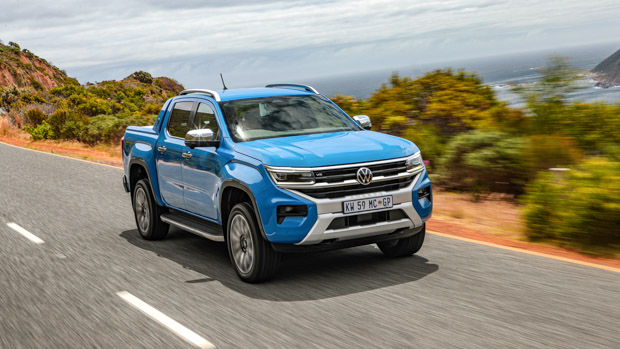
Volkswagen sources are ardent in the view that the Amarok is far from a rebadged Ranger and insist that VW was able to exercise strong influence on the direction of the T6.2 platform. Some suggested that the V6 diesel would not have happened without Volkswagen’s entry to the project.
However, Volkswagen also says it was closely involved with determining the final hard points – the physical dimensions of the ute, plus the location of key components like the suspension – rather than accepting Ford’s solutions without question.
This early influence means that both the Ranger and Amarok benefit from the input of both manufacturers, but the Volkswagen goes further, with unique characteristics for the steering and suspension that mean it is no mirror to the Ford from behind the wheel.
This reflects Volkswagen’s toolkit strategy it deploys on other platforms it shares between brands, including the MQB architecture shared between Volkswagen, Skoda, Audi, Cupra and – latterly – Ford Europe.
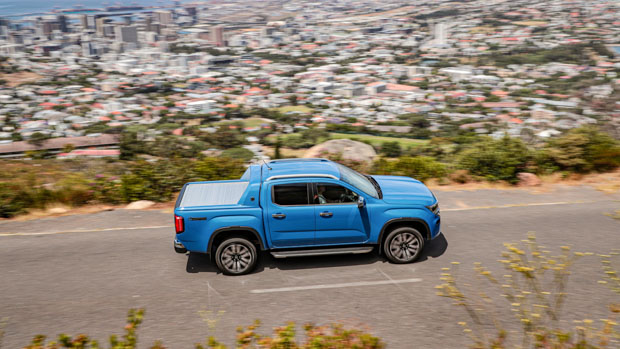
While the powertrain understandably feels identical, the ride and handling are clearly differentiated. All Amarok grades run Volkswagen spring and damper tunes, plus VW software for the electric power steering. The Aventura goes further, adding unique shock absorbers not found on any Ranger.
It’s no surprise that the Aventura felt the most differentiated from the Ford ute on our extensive, circa-400km drive traversing several mountain passes of the Western Cape of South Africa, plus the urban routes and motorways of Cape Town.
Picking up on a similar vibe to the outgoing Amarok Ultimate and Aventura grades – with perhaps a hint of the hot Walkinshaw W580S spec – the new Aventura is basically a GT-ute with a sporty, road-focussed suspension and steering tune.
That reflects the expectation formed from looking at the vehicle: on huge new 21-inch wheels and road-spec tyres, the Aventura apes sports SUVs more than it does rugged pick-ups – which is what the Panamericana is for.
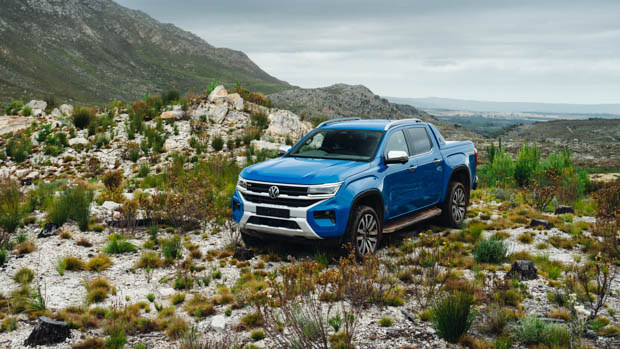
The steering is positive and mid-weighted, delivered through an appropriately chunky steering wheel and turn-in is remarkably crisp for a dual-cab. Coupled to the fact the power driver’s seat can be set remarkably low and the Amarok Aventura becomes almost perversely fun to drive on an involving country road.
The payoff for the better-than-expected handling is a relatively firm ride quality that avoids most body roll and nearly eliminates head toss. While it’s firm, most dual cabs have a stiff ride on account of their high payload. While the Aventura is not supple at low speeds, the suspension has far more discipline and control than any Hilux or Navara.
Amarok’s biggest problem on the ride front may be Ford Australia’s outstanding suspension tune fitted to the Ranger XLT, Sport and Wildtrak, which strikes a good balance between body control and compliance—while the Raptor’s Fox-shocked suspension remains untouchable for comfort levels.
We’ll need to get the Ranger and Amarok back-to-back on the same piece of road to make a final decision about which gets it most right – but the point is that both are years ahead of the competition on this metric, and each manifestation of the platform will appeal to different customers.
Amarok fans will be pleased to learn that Volkswagen has successfully differentiated their ute from its platform-sharing partner, though ute-spotters will recognise some shared components.
Essentially, everything above the window line is shared with Ford—whereas nearly everything below it was customisable by Volkswagen, and the German brand has not shied away from extensive differentiation.
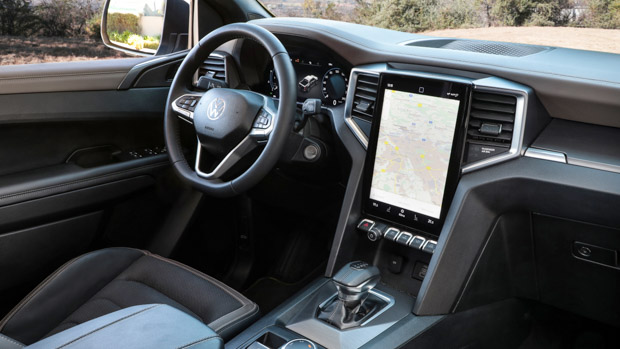
Those differences commence with entirely unique seats that blow the Ranger away for comfort straight out of the box. As we expect from Volkswagen, the Amarok’s seats have tall bolstering, firm ergonomic support, and extensive electric adjustment on most grades, with particularly sufficient under-thigh angle tilt.
Superb seat comfort alone is likely to make the Amarok the pick of the pair for road-trippers and those buyers who do high miles.
On the Aventura grade, the seats are upholstered in smart, perforated black/grey two-tone ‘Savona’ leather trim, with matching stitched trim on the dash and door tops, while the Panamericana goes for surprisingly chic vintage-effect black/brown ‘Cricket’ leather with matching stitching.
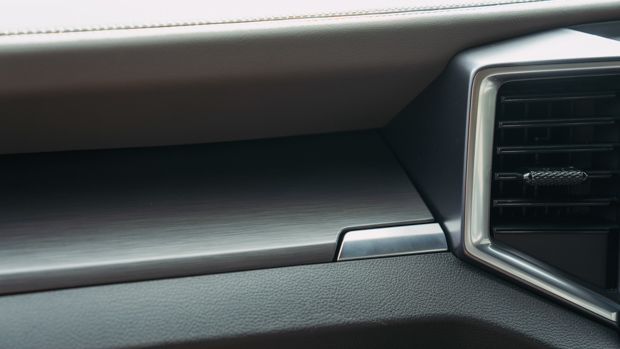
Seat heating is standard from the Style up, but in warm South Africa—and back home in Australia—we would have appreciated the inclusion of a seat cooling function to match the recently-revealed Ford Ranger Platinum. That said, the air conditioning is strong.
Further afield, the Amarok progresses to a completely unique dashboard design that goes as far as swapping out even secondary plastic trims for Volkswagen’s own materials. The shinier plastics that dot a Ranger interior are pulled out and replaced by VW-spec, high-grain matte plastics that soak up light and just look more expensive.
Even the first-gen Amarok’s distinctive T-shape dashboard architecture has been cleverly retained here, and there is a more pronounced 3D effect to the dash stack than the slabby Ranger.
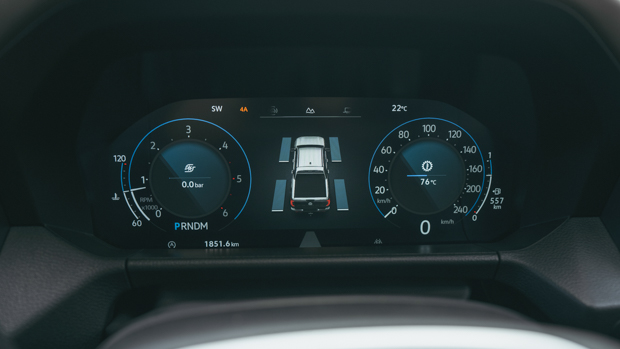
Likewise, the Amarok uses a Volkswagen steering wheel that, mercifully, retains hard buttons for key controls. Ford-spotters will recognise Ranger indicator and wiper stalks.
Perhaps the most obvious shared components inside involve the technology stack. The 12-inch vertical touchscreen and 12.3-inch digital instrument cluster are the same parts used in the Ranger Wildtrak and they operate on Ford’s snappy Sync 4 infotainment system.
Sync 4 has been cunningly disguised by a very extensive reskin with Volkswagen colours, graphics and fonts – but here, VW’s customisation doesn’t go far enough.
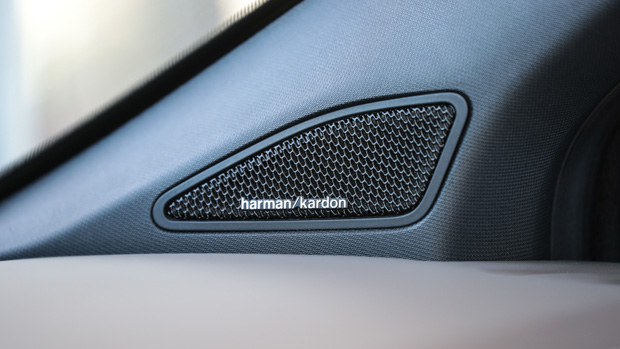
While the virtual cockpit looks like fully-Volkswagen software at first glance, it quickly became evident that it lacks VW smarts: you can’t put a full map or even your current song in the centre of the instrument pack like you can on a Tiguan.
You’ll find physical controls including a volume knob and elegant piano-key access to the drive modes, but the Amarok violates Volkswagen’s new chief Thomas Schafer’s command to return to real buttons for climate. These will be added in time – until then, climate is driven through the touchscreen.
The Harman-Kardon audio system that will be standard on Aventura and Panamericana is rich, bassy and easy to listen to – and we wish that it was also present on the possible sweet-spot Style grade.
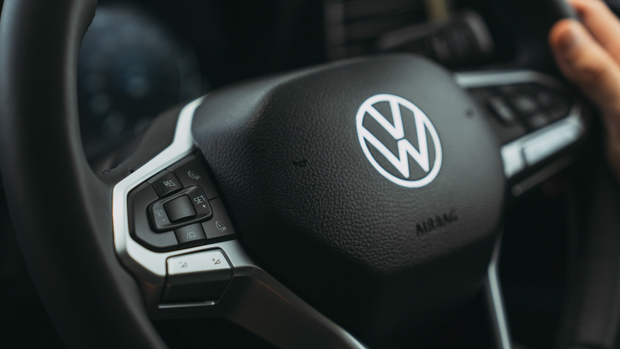
There are 24 storage locations in the interior, and the new Amarok feels more pragmatic than the first-gen car that lacked decent oddment stowage. The new ute has a dual-opening glovebox, a larger centre bin, a dash tray and door bins that still take a big water bottle.
Back seat space has improved significantly, even if the new Amarok is still not the most spacious ute in the class for second-row room. It is also a little narrower than the old car but overall usability is up thanks to superior legroom.
Rear occupants benefit from air vents for the first time, plus a household power outlet and a 12-volt socket—but no back-seat USB ports. Plus, hard rear door plastics are a sudden reminder that, unlike the plushness up front, this is no Volkswagen SUV.
The tray is much wider than it might have been, thanks to VW’s input. Sliding a Euro-pallet between the arches is still possible, but the Amarok Aventura now benefits from Ranger’s power-operated tray top roller. Our Aventura featured a spray-in bed liner, four tie down points rated to 400kg tensile load, and a damped tailgate handsomely stamped with ‘Amarok’.
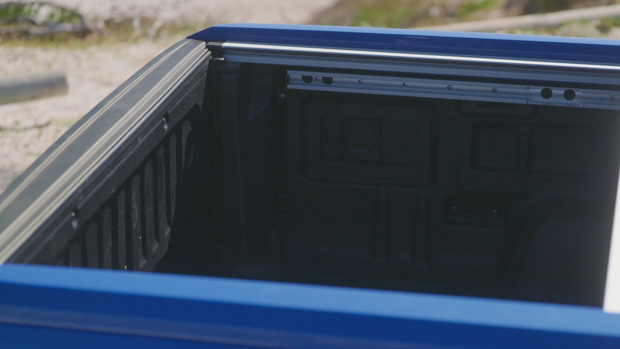
The new Amarok benefits from an appreciated and long-overdue safety technology update. The previous-gen version lacked autonomous emergency braking (AEB) and even rear side airbags. Neither problem remains an issue and the Amarok goes much further than that.
All trims get forwards AEB, forwards collision warning (that accurately detected a wayward cyclist on our launch drive), adaptive cruise control, lane-keeping assist, a reversing camera and rear parking sensors.
The Life steps up further to add blind-spot monitoring that can be used with a trailer, but disappointingly, no variant has reversing AEB which could be very useful on a vehicle of this length – particularly with a load in the tray.
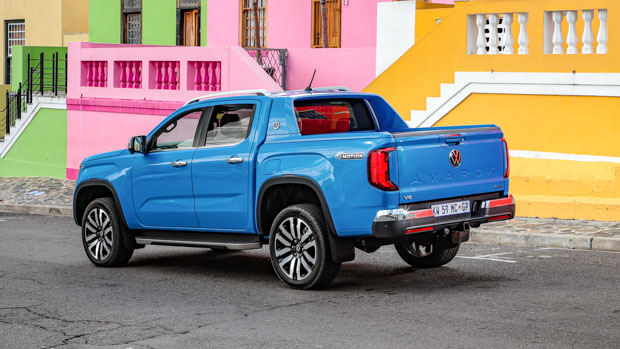
Volkswagen Australia has confirmed that the new Amarok will be crash-tested in Australia by ANCAP in 2023. The brand is expecting a five-star result.
In terms of tuning, we found the lane-keeping assist too sensitive and bitey on Cape Town’s narrow roads, so we found ourselves using the one-touch off button on the steering wheel to deal with this.
Volkswagen Australia has not yet finalised service pricing for the Amarok, but it is likely to offer discounted three- and five-year ‘care plan’ service packs to keep costs down on the maintenance front.
The new Amarok will retain the outgoing ute’s 12 month/20,000km service intervals, which are 5000km further apart than the Ranger’s.
Ford charges buyers $329 per year for the first four services (or $1316 for four years/60,000km). A five-year/100,000km service pack for the outgoing Amarok costs $2050, which is cheaper per kilometre than the Ford.
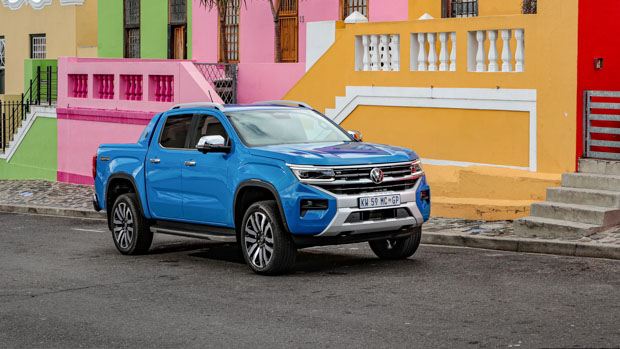
We expect that Volkswagen will announce service costs for the new Amarok when it releases pricing in January 2023.
Our first drive of the Amarok V6 was an extensive one, covering 400km of genuinely mixed driving. We recorded a fuel economy figure of 10L/100km over that distance. That’s a good result for the performance on offer and not dissimilar to economy we have seen from the 154kW four-cylinder diesel fitted to some Rangers.
Volkswagen’s standard warranty of five years with unlimited kilometres will apply to the new Amarok.
The new Volkswagen Amarok is not a rebadged Ford Ranger. There are no two-ways about it.
Ford led development of the T6.2 platform with Volkswagen’s input on the ground in Melbourne. Ford’s factory in Pretoria is building the ute for Volkswagen. Both vehicles have many common components—but the level of differentiation in the cabin and under the skin goes far further than any other ute partnership on the market.
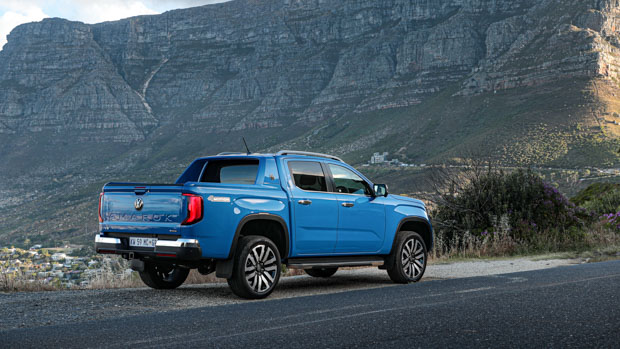
If you love your Amarok V6 today, there isn’t cause to fret. The new powertrain is, if anything, even better thanks to crisper response and smoothness, and the ride quality is slightly superior to the old vehicle.
Meanwhile, the cabin tech and especially safety attributes, take an overdue but significant leap forward.
Having now extensively road tested several new Rangers and the apex Amarok, there’s little doubt in my mind that the pair are the strongest vehicles in the segment. Direct comparison will be necessary to determine which cousin is best.
About Chasing cars
Chasing Cars reviews are 100% independent.
Because we are powered by Budget Direct Insurance, we don’t receive advertising or sales revenue from car manufacturers.
We’re truly independent – giving you Australia’s best car reviews.
The estimate provided does not take into account your personal circumstances but is intended to give a general indication of the cost of insurance, in order to obtain a complete quote, please visit www.budgetdirect.com.au. Estimate includes 15%^ online discount.
^Conditions Apply
Budget Direct Insurance arranged by Auto & General Services Pty Ltd ACN 003 617 909(AGS) AFSL 241 411, for and on behalf of the insurer, Auto & General Insurance Company Limited(ABN 42 111 586 353, AFSL 285 571).Because we don’t know your financial needs, we can’t advise you if this insurance will suit you. You should consider your needs and the Product Disclosure Statement before making a decision to buy insurance. Terms and conditions apply.
Indicative quote based on assumptions including postcode , 40 year old male with no offences, licence suspensions or claims in the last 5 years, a NCD Rating 1 and no younger drivers listed. White car, driven up to 10,000kms a year, unfinanced, with no modifications, factory options and/or non-standard accessories, private use only and garaged at night.
^Online Discounts Terms & Conditions
1. Discounts apply to the premium paid for a new Budget Direct Gold Comprehensive Car Insurance, Third Party Property Only or Third Party Property, Fire & Theft Insurance policy initiated online on or after 29 March 2017. Discounts do not apply to optional Roadside Assistance.
2. Discounts do not apply to any renewal offer of insurance.
3. Discounts only apply to the insurance portion of the premium. Discounts are applied before government charges, taxes, levies and fees, including instalment processing fees (as applicable). The full extent of discounts may therefore be impacted.
4. We reserve the right to change the offer without notice.